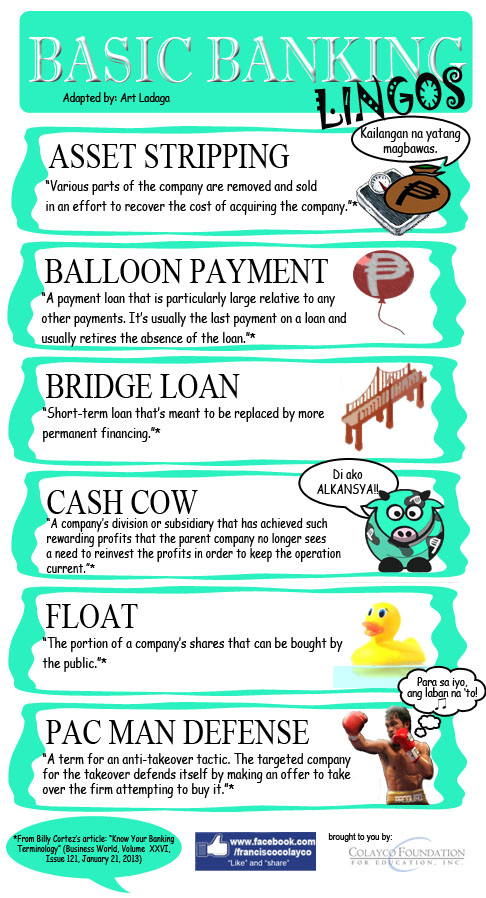by: Francisco J. Colayco
It may be that readers may be less interested in the analysis of a business. However, I’d like to address those who might want to learn for a business they now have or for their planning of a future business.
Break-even in business means how much you need to sell (i.e., how  many units of products you need to sell at a given unit price) so that you will be able to sustain your business. Break-even does not mean you are losing money but it also does not mean that you are making money. If your sales are below your break-even, you will be incurring losses and if it is higher, your will be making money.
many units of products you need to sell at a given unit price) so that you will be able to sustain your business. Break-even does not mean you are losing money but it also does not mean that you are making money. If your sales are below your break-even, you will be incurring losses and if it is higher, your will be making money.
For big businesses, there will be finance people who can do all the required analysis. However, for a small business, the owner will have to do the analysis himself and it may not be so easy for those who do not really have experience. I will try to help you to compute break-even. You do not have to think in a complicated way. You can just use the simplest forms possible.
5. The basis for determining your break-even sales is your sales price per unit of your product (e.g. per kg, or per piece or per hour, etc, etc).
Want to read more? Click here for the rest of the article!
